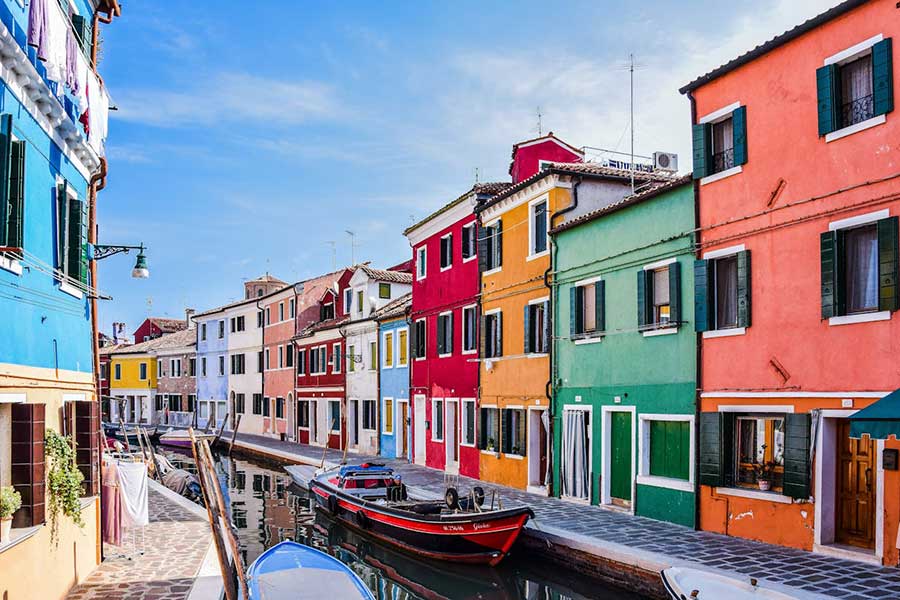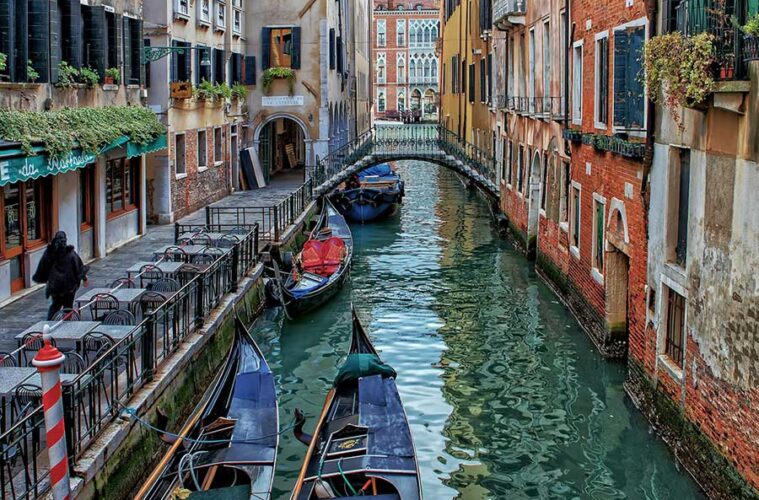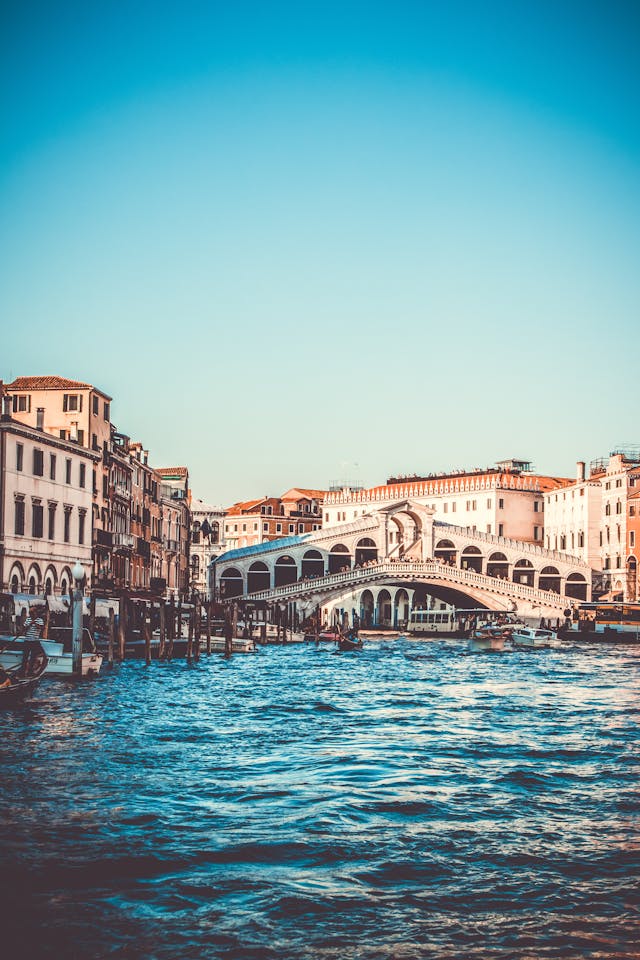With a rich history dating back to the 6th century, Venice has long invited tourists from all over the world to get lost in its ancient streets, take a gondola or vaporetto ride through the canals, and immerse themselves into the unique beauty of the islands that lay on the Venetian Lagoon. This guide highlights the must-see attractions in Venice, a city that continues to face significant climatic challenges.
Venetian Islands
Venice, the charming capital of the Veneto region in northern Italy, is a city like no other. The city lies on the Venetian lagoon, located at the Adriatic Sea. But did you know that rather than a single island, the city forms a “web” of about 120 small ones? These are separated by small canals and connected by bridges.
The most visited island is Centro Storico (the old town). Shaped like a fish, it’s divided into six districts and is considered the main island. To reach it from the mainland, you have to cross the Ponte della Libertà from the north by car or train.
From there, you can explore the other islands by taking a vaporetto (water bus) or ferry, which are one of the public transport options.
Murano and Burano
When in Venice, it’s definitely worth visiting the two important islands nearby. One of them, Murano, is well-known for its long-established tradition of glassmaking and glassblowing.
The tradition of glass production in Venice dates back to the early Middle Ages, with roots in the Roman Empire. However, due to the easily spread caste fires caused by the glass blowing furnaces, the Venetian government decided to relocate the glassmakers. In the 13th century, the Venetian government relocated the city’s glassmakers to Murano, where the tradition has flourished ever since.
While the island is an oasis of glassmaking workshops, you’re not likely to spot the real artisans who work behind closed doors, hiding from the public eye.
The rows of colorful houses in Burano attract tourists the most. But they were not built just for aesthetics. They served as a visual reference for fishermen to find their way home safely after a day on the water.

Like Murano, Burano has its unique craft, lacemaking, which used to be in demand by European royalty. So, why not visit a lace museum to see the details of thoroughly adorned tablecloths, wedding dresses, and other objects?
What to see in Venice
Going back to the historic center of Venice, here’s a list of the most important sightseeing places you cannot miss.
St Mark’s Square
Venice’s largest and most famous square, Piazza San Marco, was built in the 9th century but finished as we know it in 1177. It is easily accessible by water taxis and gondolas and contains important monuments worth entering, such as Doge’s Palace or the majestic St Mark’s Basilica.
Just remember that the square and its surroundings are in the lowest part of the city, meaning that they are the first places to be inundated when it floods.
St Mark’s Basilica
First opened in 1094, St Mark’s Basilica glows like gold on the beautiful piazza. This monument declared a UNESCO World Heritage site, is also denominated “Chiesa d’Oro”, or “Golden Church”, because of its notable use of gold that the republic’s admirals and merchants gathered from the East.
Doge’s Palace
For those fond of history, Doge’s Palace is an ideal place to visit if you want to explore the glory of the Venetian Republic. Following St Mark’s Basilica on the list of Venetian largest attractions, this impressive Gothic building used to function as the residence of the Dodge of Venice and hold government offices. It lies near St Mark’s Basilica, so once you’re at Piazza San Marco, why not kill two birds with one stone?
 Grand Canal and Rialto Bridge
Grand Canal and Rialto Bridge
The biggest canal in the city of Venice is the popular Grand Canal. And you would most certainly regret it if you skipped the only bridge that crosses it.
The area around Rialto Bridge used to be the city’s commercial center, holding fish and vegetable markets and the two main Venetian banks. The first bridge, made of wood, was therefore built for economic reasons, as it facilitated access by other means than gondolas.
However, the bridge was soon damaged, and reconstructed multiple times, until it adopted its current form of a stone bridge in the 16th century.
But more attractions await you if you pass along the Grand Canal. Despite today’s prevalent popularity of online casinos, Venice might surprise you with the oldest brick-and-mortar facility – Casinò di Venezia, which is housed by Ca’ Vendramin Calergi, the 15th-century palace built on the Grand Canal. This was also the place where the composer Richard Wagner died in 1833, which is why apart from the casino, it’s also home to the Wagner Museum.
Very near, on the opposite side of Grand Canal, you’ll find the beautiful façade of another historically important palace, Fondaco dei Turchi. It features the style of classical Venetian architecture and has housed the Natural History Museum of Venice since 1923.
You’ll surely notice more – a Gothic palace of Ca’ d’Oro or a modern museum of the Palazzo Venier dei Leoni. Just jump on a gondola, or take a vaporetto line number 1 or 2, and admire the architectural splendor of this enchanting city. While line 2 gives you fewer chances to stop, line 1 takes longer, but stops about 15 times.


 Grand Canal and Rialto Bridge
Grand Canal and Rialto Bridge